Writing well takes practice and patience, but it’s a skill that offers real benefits both in the classroom and the real world. For many, writing is incredibly challenging, leaving people asking “Where do I even start?” Even experienced authors use a variety of writing strategies to keep themselves on track. We’ve rounded up some of the best writing strategies, with explanations and examples to help aspiring writers plan, organize, get started, and polish their final drafts.
Planning and Prep Writing Strategies
Before you ever put pen to paper (or fingers to keyboard), writing takes a lot of preparation and planning. Use these strategies to get yourself ready to write.
Mentor Texts
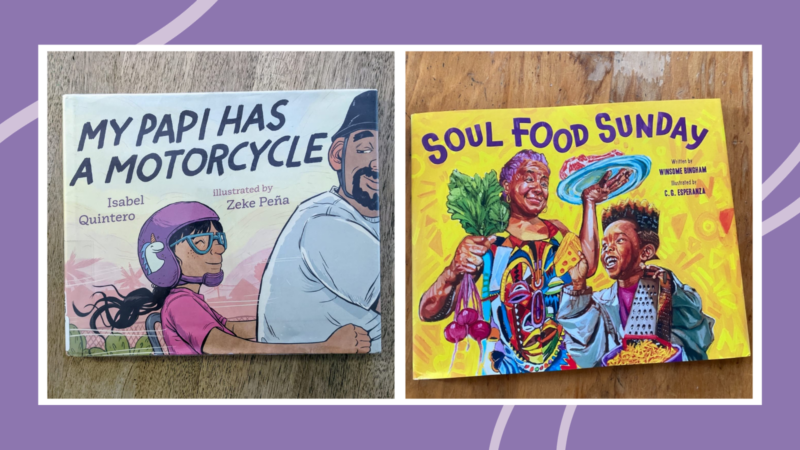
The best writers are the ones who also read voraciously. Reading helps you develop your general language and composition skills by exposing you to correct grammar, syntax, and more. Even more importantly, reading gives you examples of great writing (and often, bad writing). It allows you to explore different writing styles so you can develop your own personal voice. Author and screenwriter Ray Bradbury recommended reading one short story before bed every single night.
Many writers, especially students, use mentor texts as examples of the type of writing they want to emulate. Reading a few of these in the style of the piece you’re working on can inspire and guide you along the way. These texts can be books, magazines, articles, poems, essays, and more. Here are some of our favorite mentor texts in various styles:
Research
To write convincingly about a topic, you must know it well, whether you’re working in nonfiction or fiction. If you decide to set your short story in Greece in the 19th century, you’ll need to know what life was like then. Writing about a main character who loves skateboarding means knowing the terminology and language of the culture. Deep knowledge on a topic adds realism and authenticity to any form of writing.
Regardless of what you’re researching, it’s important to use reliable primary sources. The Internet makes researching easier than ever before, but it can be harder to know whether your sources are trustworthy. Dedicated writers take time to verify their sources, and it’s especially important to teach young writers how to do so.
Taking good notes is vital when you’re researching. For some people, this means bookmarks and annotated text. Others prefer outlines or mind maps. Learn about smart note-taking strategies and choose a few that work best for you.
Immerse Yourself
Take your research a step further by truly immersing yourself in the time and place you’re writing about. Visit places in person if you can, or try virtual online tours through sites like Google Earth. These virtual field trips are a good option if you can’t get there yourself.
Meet or talk with people who have personal experience with your topic. Eat the foods of a country or culture, and listen to its music. Explore lots of visual sources, like pictures and videos. You can even hang some of your favorite images around your workspace for inspiration. The more familiar you are with a topic, the more comfortable you’ll feel writing about it.
Know Your Audience
Imagine you’re writing about whales. You’ve done lots of research and have plenty of interesting information to share. But the way you share it will vary a lot depending on who you’re writing for. If your audience is your teacher, you’ll probably want to use technical terms and cite your sources. But if you’re writing a book for little kids, your writing will be more descriptive and the language much simpler.
Ask defining questions like these:
- Who will read what I’m writing?
- Why are they reading it?
- What kind of language will they understand?
- What might they already know about this topic?
- What will these readers really care about?
- How will their personal experiences affect them as they’re reading?
- What style and tone of writing are they likely to enjoy most?
Character Profiles
Fiction writers need to create believable characters, with fully developed personalities. Some writers envision entire backstories for their characters that never make it onto the page. But these backstories inform their writing, driving their characters’ actions and choices. Try some of these ideas to develop strong characters:
- Create a family tree or relationship map of your characters
- Draw the characters, or describe their physical looks in detail
- Write timelines of your characters’ lives
- List their personality or character traits
- Describe a character’s hopes, dreams, and ambitions
- Determine the character’s voice: how they talk (words and phrases, syntax, etc.) and any accents, dialects, or code-switching they use
Start at the End
It sounds a little strange, but consider writing the final sentence or paragraph of your work first. After all, when you plan a trip, you almost always have a final destination in mind. How you get there may vary, but you’re ultimately striving toward a particular goal.
If you’re working on a nonfiction essay or research paper, writing the end first allows you clarify exactly what ideas you want your reader to walk away with. Then, you can work backward to fill in the details that support those ideas. Write your first paragraph last, and you’ll find it much easier to sum up your ideas and prepare the reader for what’s to come.
Fiction writers can do this too. In fact, many mystery writers start at the end, determining the solution to their mystery first. This allows them to build up the story around that resolution, ensuring the narrative hangs together. Picture your characters at the end of the story, then decide how you’ll get them there.
Organization Writing Strategies
One of the hardest parts of writing can be keeping everything in order, especially when you’re writing longer pieces. Writers also need to manage their time to ensure they hit any deadlines or due dates they might have. These writing techniques can help.
Establish a Routine
Every famous author has had their own particular writing routine or habits. Stephen King sat in the same place each day, with his papers arranged carefully around him. E.B. White never listened to music while he wrote (although other distractions didn’t bother him). Hemingway wrote first thing every morning, as early as possible. Simone de Beauvoir wrote a little in the morning and then again in the evening.
Each one is different, but one thing is the same: They almost always followed the same routine and habits. This kept them focused and ensured they could meet the goals they set. Set aside a specific time for writing each day, and figure out the setting and habits that suit you best. Think about when you’ve been most productive, and try to replicate that as much as possible.
Set Writing Goals
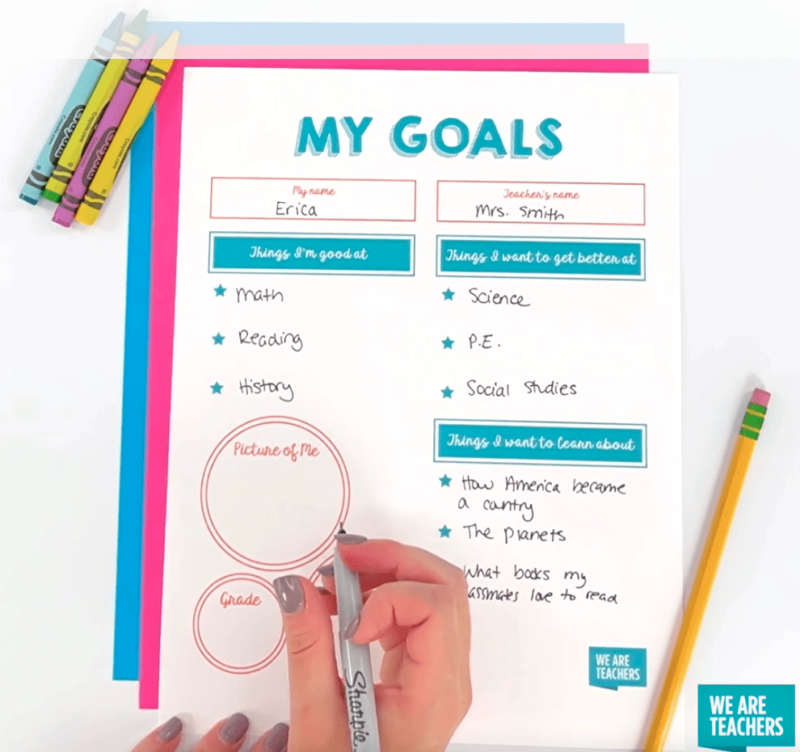
We often teach students to set S.M.A.R.T goals: specific, measurable, achievable, realistic, and time-bound. These are ideal for writing, especially when you have a longer or more complex piece to finish. They also work if you just want to get a little better at your craft.
If you have a deadline or due date, start with that in mind and work backward. Be sure to allow time in your schedule for items like research, planning, a first draft, revision/editing, second draft, feedback, and a final draft. When you’re writing your first draft, consider breaking it into even smaller sections that will help you meet your goal and keep you on target. (Stephen King writes six pages a day; John Steinbeck was happy with just one.)
Outline or Story Map
For longer pieces, writers turn to outlines and story maps, creating the overall structure of their composition before they start writing in sentences and paragraphs. Some do this using the traditional outline structure, starting with the main points and filling in key details. Others like the sticky note method, where they write one fact or plot point on each note and move them around as needed.
When you map things out in advance, it makes the writing process itself much simpler. For nonfiction pieces, it ensures you don’t leave out any important information. In fiction, a story map helps you plan a narrative arc that hangs together and drives the story along. When you have an outline or story map in place, you can focus on finding the words to share these ideas with your audience.
Writing Template
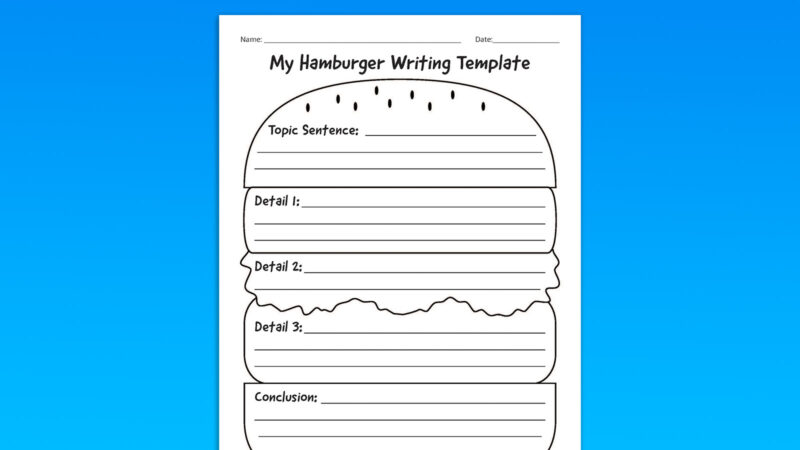
A template can be a real benefit, especially for beginners or young students. It lays out the various sections and guides the writer through the process of completing each one. Think of a template kind of like training wheels; they help inexperienced writers feel a little more comfortable and keep them from missing important steps while they write. Check out our huge collection of free printable writing templates for elementary students.
Storyboard
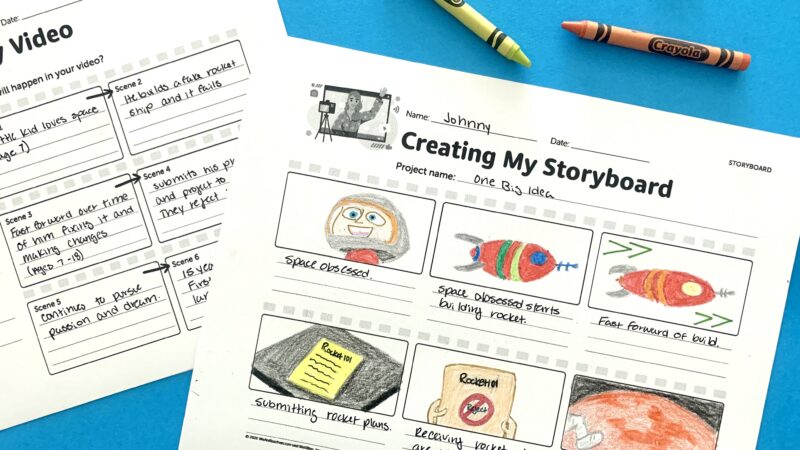
If you’re a visual person, try a storyboard instead. This method uses a blank comic-book-style template to sketch out the action scene-by-scene. You don’t necessarily need to be a strong artist to use a storyboard, as long as you can get your ideas across in your drawings. Find a free storyboard template for younger students here.
Once you have your sketches, go back and add some text underneath. This might be dialogue, descriptive terms, or facts you want to include in that section. This text provides a terrific jumping-off point to begin writing in earnest.
Writing Strategies To Overcome Writer’s Block
It happens to everyone: the horror of the blank page—and a blank mind. The deadline clock is tick-tick-ticking, so you know you’ve got to do something, and do it pretty quick. Take a deep breath, then see if one of these writing strategies can help you break through.
Free-Write (Brainstorm)
This is all about just putting something down on the page. It doesn’t need to be good, it doesn’t need to follow grammar or spelling rules, it doesn’t even necessarily need to make sense! Just start letting words flow from your brain through the pen or keyboard and onto paper. In the same way that the physical act of smiling can actually make us feel happier, the physical act of writing or typing can sometimes get the creative juices flowing at last.
Write about anything, even the fact that you don’t have anything to write about, in a stream-of-consciousness style. When you feel up to it, transition into writing a bit about your topic or plot. Even if you only manage to write one good sentence or phrase you can use, it’s still progress.
Writing Sprints
Set a timer and just WRITE. Keep your pen (or fingers on the keyboard) moving the entire time, no matter what. If you’re really stuck, just write or type the same word over and over again until something shakes loose. Or combine a writing sprint with a writing prompt (see below) and let your words run free.
Short sprints of 5 to 10 minutes are great for warming up before a longer writing session. But you can also try longer sprints (up to an hour or so), where you purposely block out all other distractions. Turn off or mute your phone, set your device to distraction-free mode, shut the door or put on noise-cancelling headphones, whatever it takes. For the duration of your sprint, your only job is to write.
Writing Prompts
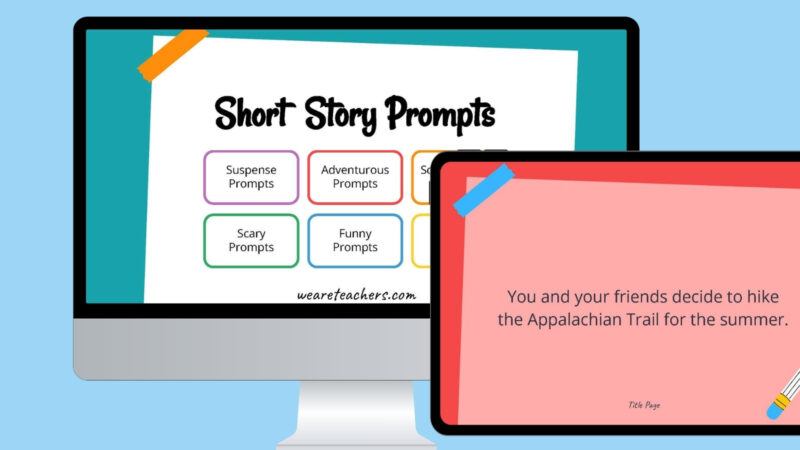
Use prompts to spark creativity and overcome writer’s block. Whether they inspire you to write a lot or a little, they get you into a creative mood and strengthen your writing muscles. We’ve got lots of writing prompts and topics to tackle:
Vignettes
A vignette is a short, descriptive piece that tries to bring the reader fully into one single moment. It doesn’t need a plot; rather, it tries to capture the mood and atmosphere with lots of evocative detail. Vignettes are a great way to jump-start your writing, establishing the setting of your piece or a particular scene you want to describe. Learn more about using vignettes here.
Dialogues
Having trouble figuring out your characters’ motivations, voices, or relationships? Try dialogue. You can approach this several different ways. One is to imagine and write a conversation between two or more characters in your story on any topic. You may or may not use this dialogue in your finished work; the point is to help you hear each character and their personality more clearly.
Another option is to have an imaginary conversation with a specific character out loud. Pretend you’re talking to them, and when they “respond,” speak aloud their voice as you imagine it in your head. Then, try to put those words into writing to see how they translate to the page.
Rough Draft
Initial drafts can actually be pretty freeing, because you’re not working toward perfection. Instead, you’re trying to get all your ideas onto paper for the first time, in sentences and paragraphs. Don’t worry too much about word choice, spelling, or even grammar at this point. Instead, just keep on writing. You’ll have plenty of opportunities to go back to revise and edit.
A rough draft might wind up being much shorter or longer than your final version. Some people like to write down anything and everything they’ve researched or planned for. Then, they condense and trim their text in later drafts. Others like to lay out the overall structure, then return to add more details and depth. Both of these methods are valid, so use whichever works best for you.
Writing Strategies To Polish Your Work
With your initial draft finally on the page, it’s time to edit, revise, and make it the best it can possibly be! These techniques and strategies will help you get there.
Captivating Opening Sentence
A strong opening sentence draws the reader in from the beginning. Try writing multiple versions to see which you like best. To ensure your opening is truly meaningful, share it with someone on its own, without the rest of the text for context. Ask what they think your writing will be about based on that single sentence, and if it interests them enough to want to read the rest.
Even nonfiction writing deserves amazing opening sentences. Darwin began On the Origin of Species by saying, “When on board H.M.S. ‘Beagle,’ as naturalist …” The book itself has a lot of dry technical writing, but that opening sentence evokes a sense of time and place, of adventure in far-off places, and it draws the reader in.
Avoid starting your writing with conventional phrases like “In this paper I will prove that …” or “I’m going to tell you about …” Thesis statements are important, but they’re rarely interesting enough to really intrigue the reader. Take a cue from Virginia Woolf, who opened A Room of One’s Own with: “But, you may say, we asked you to speak about women and fiction—what has that got to do with a room of one’s own? I will try to explain.”
Revision
Very few writers write a first draft that’s ready to be turned in or published. Instead, they revisit and refine their drafts multiple times, a process known as revision. When you revise, you focus on the overall structure and clarity of your work. Ask yourself questions like these:
Nonfiction Revision
- Is/Are my main point/s clear?
- Have I completely proven all the points in my thesis statement?
- Did I use facts to back up my assertions or opinions?
- Have I included citations or quotations that support my writing?
- Are there any areas where my writing is vague or needs to be clarified?
- Have I addressed any counterarguments and acknowledged alternative views?
- Does the overall structure make sense?
- Do my paragraphs transition well from one to the next?
- Should I add headings or subdivisions to make the paper easier to follow?
- Is my language and tone appropriate?
- Have I varied my word choice, refraining from repeating words or phrases over and over?
- Does my conclusion effectively and clearly sum up my paper?
- How will the reader feel when they finish reading this work, and does it match how I want them to feel?
Fiction Revision
- Does the story have a clear beginning, middle, and end?
- Is there a strong narrative arc?
- Have I left any plot holes or unresolved conflicts that may feel unsatisfying?
- How is the pacing? Does the story move along well, or does it get bogged down in places?
- Do my characters speak with clear, individual voices?
- Have my characters grown and changed as the story progressed?
- Do the characters’ voices feel authentic?
- Have I added realistic details without relying too heavily on description to carry the story? (“Show, don’t tell.”)
- Does the setting feel real? Can I picture myself living in that place and time?
- Is the conflict interesting enough to draw in the reader and hold their attention?
- How do I want the reader to feel when they finish the story? Have I accomplished that?
Editing
Once you’re happy with the overall structure and writing itself, it’s time to get down to the technical nitty-gritty. That means details like grammar, syntax, punctuation, and spelling. In other words, the time has come to proofread your work.
Word-processing programs or apps like Grammarly can help you catch a lot of these errors, making this job easier. But the final edit is ultimately down to you, so proofread and correct, then proofread again. Do your best to make your writing as technically perfect as you can, so the reader isn’t distracted by spelling mistakes or other minor problems.
Read Aloud
One fantastic way to revise and edit is to read your text aloud, to yourself or others. Maya Angelou often read her writing out loud to her husband in the evening. “Hearing it aloud is good,” she explained. “Sometimes I hear the dissonance; then I try to straighten it out in the morning.”
Reading aloud is also ideal for catching errors like missing words or confusing sentences. You likely read much faster in your head than you do out loud, so this method forces you to slow down and focus. This is one of our favorite writing strategies for those who have trouble with attention to detail.
Peer Review
Experienced writers welcome feedback from others. Read the acknowledgements in any book, and you’re likely to find the author thanking their peer writing group or editors for substantially improving their text.
Some people find it hard to take feedback on writing, since it can feel very personal. Remember this: If you’re writing something only you will ever see, then you don’t need to worry about others. But if your writing is intended for an audience, you have to let that audience see your work to find out if you’ve truly managed to convey your ideas.
You don’t need to incorporate every suggestion or change your peers, teacher, or editor suggests. But feedback ultimately makes writing stronger and better. Seek it actively and use it wisely, and you’ll find it’s one of the most valuable writing strategies of all.

